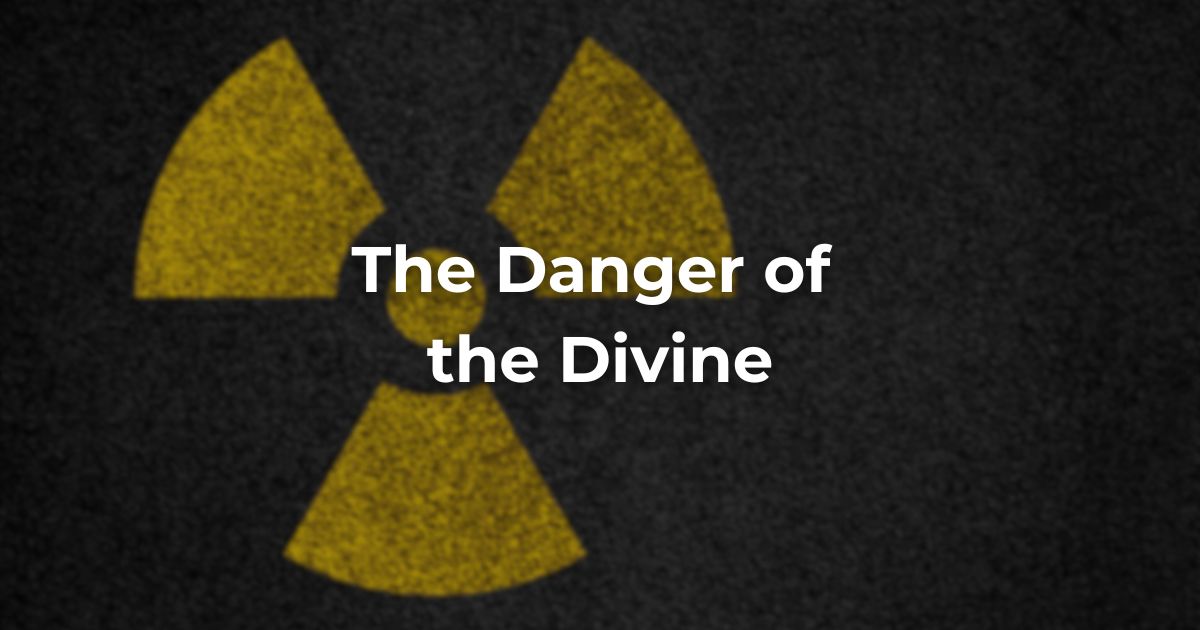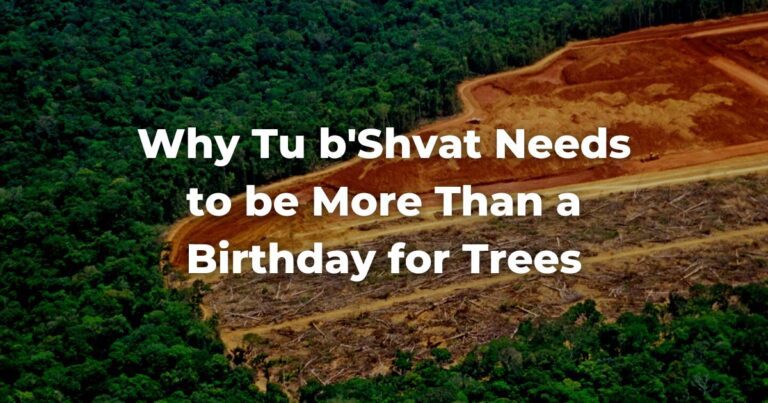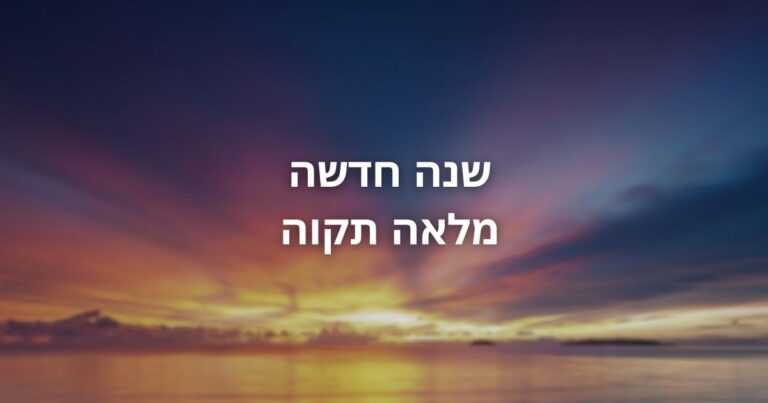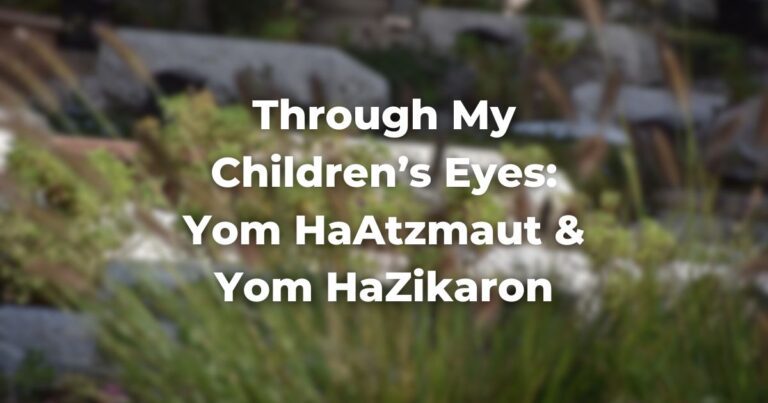This piece is part of Exploring Judaism’s 5785 High Holiday Reader. Download the whole reader here.
In the desert of New Mexico, someday in the near future, you may stumble across an unlikely sight: a tremendous concrete structure extending 60 feet above the ground and 30 feet below it. The walls will be filled with small samples of radioactive nuclear waste. In this concrete structure, there will be a circular perimeter of 25-foot-high granite pillars with warnings carved into them. Inside the ring of pillars will be a berm, 30 feet high, artificially built out of granite and salt and filled on every side with radar reflectors, magnets, discs made of ceramic and glass, and metal plates engraved with the words ‘Do not dig.’
If you climb over the berm, you will find a carved slab of granite shaped like a dome 600 meters across. Engraved into the granite will be a monumental map of the Earth, with sites marked where radioactive waste was buried and a large obelisk sticking out over the spot on which you stand, in the desert of New Mexico, indicating ‘You are here.’
If you continue past the giant stone map, you will find a chamber dug into the earth, made of granite and reinforced concrete specially treated to last ten thousand years. On its walls will be engravings of scientific details of radioactivity and its dangers—written like the Rosetta Stone in all six official UN languages, and Navajo.
Below will be a room with four small doors, each with a sliding stone door. Each door leads to a shaft, which will be backfilled with dirt all the way down to the core of this strange site. At the very bottom, 600 meters under the Earth’s surface, will be a chamber filled with transuranic radioactive waste. On walls leading down to the backfilled stone chamber, the same message will be engraved:
This is not a place for you.
This place is not a place of honor.
No highly esteemed deed is commemorated here.
Nothing valued is here.
What is here is dangerous and repulsive to us.
Pay attention! We are serious.
Sending this message was significant for us.
Ours was considered an important culture.
We are going to tell you what lies underground, why you should not disturb this place, and what may happen if you do.
This site was known as the WIPP (Waste Isolation Pilot Plant) when it was closed in 2038 CE.
The waste was generated during the manufacture of nuclear weapons, also called atomic bombs.
We believe that we have an obligation to protect future generations from the hazards that we have created.
This message is a warning about danger.
We urge you to keep the room intact and buried.
Believe it or not, this is not science fiction but present reality. The Waste Isolation Pilot Plant (WIPP) is due to be filled and sealed by 2038, with the structures described gradually built around the site in the decades following. This strange project is one of three deep geological repositories for nuclear waste that we, the inhabitants of Earth, are presently attempting to construct. It, and the messages and symbols that will adorn it, are all products of an unusual U.S. government study commissioned in the 1980s, known by the innocuous-sounding name, the Human Interference Task Force.
The Human Interference Task Force asked various scientists, linguists, semioticians, and historians to devise ideas to solve a big problem: how can we communicate the danger of radioactive waste in the distant future?
Assuming that in ten thousand years, human society will have changed so much that written records or simple signage won’t be enough, the Task Force solicited ideas for how to ensure that our distant relatives in the future would be safe from the byproducts of our current explorations of nuclear energy. Several fascinating solutions were proposed.
Science-fiction writer Stanislaw Lem suggested a series of artificial satellites designed to last a long time. These satellites would orbit the Earth and continuously relay messages down below to warn the planet’s inhabitants about what is buried below.
Another team suggested the specialist breeding of radioactive cats. Assuming that cats will always continue to self-domesticate and live around humans, the theory was that they would inadvertently carry the same message. These radiation cats would change significantly in color when they came near radioactive emissions and serve as living indicators of danger.
Vilmos Voight, a Hungarian scientist, suggested a concentric ring of signs in every known language to surround radioactive sites. Every few years, new signs would be added in new languages, but without removing the old ones – so that in ten thousand years’ time, there would be a ring of billboards in successively ancient languages warning the inhabitants of the future Earth not to go near the waste.
There was yet another suggestion, which I think is even more interesting.
Another Hungarian, Thomas Sebeok, suggested that we create a new religion to protect the sites and the people who may one day live on the earth. He called it ‘The Atomic Priesthood’, and the idea was simply that religion is the best vehicle for ensuring long-term information transmission, particularly about danger.
Inspired by the perseverance of the myth of Pandora’s Box, Sebeok believed that our best hope of protecting the future was to create similar myths, stories, rituals, and religious personnel. Could a religion carry the message of danger better than any sign, symbol, or concrete construction? I think so. I think Sebeok was on the right track. We generally don’t like to talk about danger and religion – but encounters with God are a dangerous business.
The ritual of Yom Kippur described in the MishnahA collection of rabbinic teachings edited in Israel around 225 CE. Organized in six sedaraim by subject matter and dealing with both ritual and civil law. Both the Jerusalem and Babylonian Talmud are expansive discussions of the Mishnah. Read more is incredibly detailed. The High Priest, who would enter the kodesh hakedoshim, the Holy of Holies, in the Temple only on this one day each year, had to undergo seven days of extreme preparation. He is warned by the Sages of the time about the danger of getting anything wrong. It is so dangerous that he must write a will for his children and write a get (a decree of divorce) for his wife before he goes into the Temple. He must wear special clothes and is prevented from sleeping the night before; he undergoes elaborate purification rituals and is expected to engage in tremendous feats of physical and mental preparation. Why? Because, as the Mishnah tells us, there’s a pretty good chance he’ll die when he comes so close to the holy sanctuary in the midst of the Temple.
Our later tradition expands upon this sense of danger – imagining a variety of practicalities that may have been needed to ensure the safety of the High Priest when he enters the Holy of Holies. The Zohar describes a golden knotted cord being tied around his ankle so that if, which seems likely, he died due to contact with God, his corpse could be pulled out without anyone else having to enter to retrieve it. Although this particular image – the golden knotted cord around the ankle – seems to be an innovation of the Zohar, the idea of danger is not new. Leviticus 16:2, from which we read on Yom Kippur morning, says:
וַיֹּאמֶר ה׳ אֶל־מֹשֶׁה דַּבֵּר אֶל־אַהֲרֹן אָחִיךָ וְאַל־יָבֹא בְכׇל־עֵת אֶל־הַקֹּדֶשׁ מִבֵּית לַפָּרֹכֶת אֶל־פְּנֵי הַכַּפֹּרֶת אֲשֶׁר עַל־הָאָרֹן וְלֹא יָמוּת כִּי בֶּעָנָן אֵרָאֶה עַל־הַכַּפֹּרֶת׃
God said to Moshe: Speak to Aharon your brother: Don’t go at any time you wish into the sacred place behind the curtain, in front of the covering over the ark, so as not to die, for I appear in the cloud on top of the covering.
Elsewhere, Moses is told that no one can see God and live (Exodus 33:20), and examples of this danger proliferate in Leviticus – such as the plague that breaks out against the Israelites when they come too close to the Mishkan (Tabernacle) after Korach’s rebellion (Numbers 16). The sudden deaths of Aharon’s two sons, Nadav and Avihu, when they came too close to the Mishkan (Leviticus 9) is another example. Clearly – God is dangerous. Perhaps God is not so different from the radioactive waste being buried in the New Mexico desert. Contact with God is risky; the warnings are told in stories and folklore, as well as in law and halakhah, and the message has persevered even though we no longer have a Tabernacle or a Temple or the belief that God dwells in a cloud within them. Perhaps, in some way, we already have our own version of Sebeok’s Atomic Priesthood.
Powerful things, are dangerous. That is not a radical supposition.
In many ways, nuclear energy is a great analogy for God. Nuclear power can create and destroy, give life, and take it away. Nuclear power can provide the energy to pioneer medicine, create healing, illuminate our cities, connect our globe, and reshape nature. However, as we’re all aware, nuclear power can also flatten whole metropolises, leave people scarred and poisoned by radioactivity, and remain a dangerous thing to behold and to be near, even thousands of years after it is inactive.
The half-life, that is, the time that it takes half the material to decay, of Uranium-238, the most common naturally occurring radioactive isotope, is 4.468 billion years. Consider, compared to that immense number, that we have only understood the effects of radioactive decay and its dangers for 150 years. That’s an astonishing lack of knowledge about something that is 1) omnipresent, 2) extremely powerful, and 3) potentially dangerous.
What I want to suggest to you is that when we contemplate the High Priest’s ritual on Yom Kippur, we should have in mind a conception of Divinity that has the same three criteria: 1) omnipresent, 2) extremely powerful, and 3) potentially dangerous.
I don’t think that means we should be afraid of God, but it explains why we talk so much in this season about the Hebrew concept of yirah. We talk about these days as the yamim nora’im, the Days of Awe – and rabbinic literature is littered with references to how important our sense of yirah is. Sometimes yirah is translated as ‘fear’, sometimes as ‘awe’, sometimes as ‘reverence’. This emotion, which we call yirah and that we remember and invoke today, on Yom Kippur, is precisely the feeling that Thomas Sebeok was trying to artificially cultivate around nuclear energy and that our ancestors felt in watching the High Priest enter the Holy of Holies with a golden knotted cord tied around his ankle.
Much of contemporary religion and spirituality is just bad psychology in a new language. Self-help, self-realization, self-fulfillment – all of that is critical and important to our sense of faith. But so is yirah – so is fear, and awe, and reverence, and wonder and majesty and danger. Part of what Yom Kippur is meant to do is to help us feel that, to live, at least for a day, with the overwhelming sensation of God’s power – as well as both its creative and destructive manifestations.
Upon the walls of the buried vault at the WIPP the text reads ‘This is a warning about danger.’ Yom Kippur is a reminder about yirah, about awe. This is a reminder about awe. No sacrifices are performed, no kohanim will be prepared to face death before the ark, no golden knotted cords will be tied around your ankles in synagogue this year – but the message remains: God is here. God is powerful. God is dangerous. The best response to that is an appropriate sense of yirah.
May we all merit to stand before that power and walk back out again, having touched something immensely old, potent, and dangerous and having been inspired by it to enter a new year of life, blessing, and awe.
Author
-
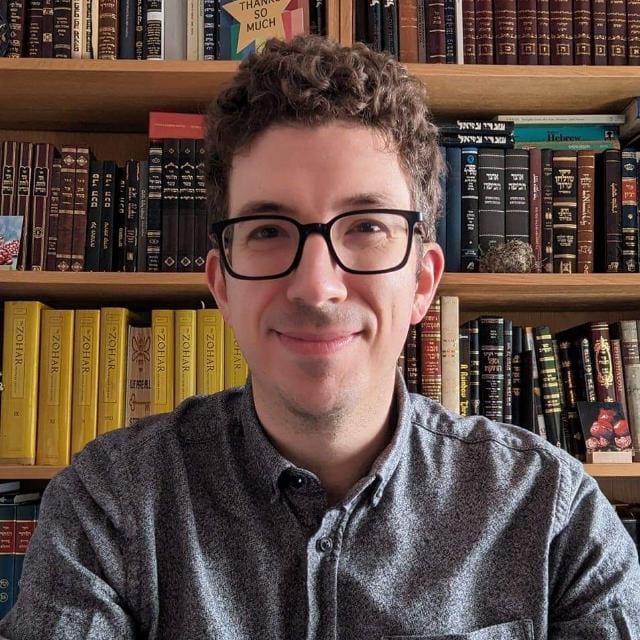
Adam Zagoria-Moffet is the rabbi of St. Albans Masorti Synagogue in the UK. He was ordained from the Jewish Theological Seminary where he also received an MA in Jewish Thought. He grew up in Phoenix, Arizona, and has lived in Minnesota, New York, and Israel before moving to the UK. His interests are primarily in mysticism, ethics, and Sephardic Judaism and culture. He also runs Izzun Books, a small independent publisher of unusual Jewish titles. He lives in St. Albans with his family.
View all posts

